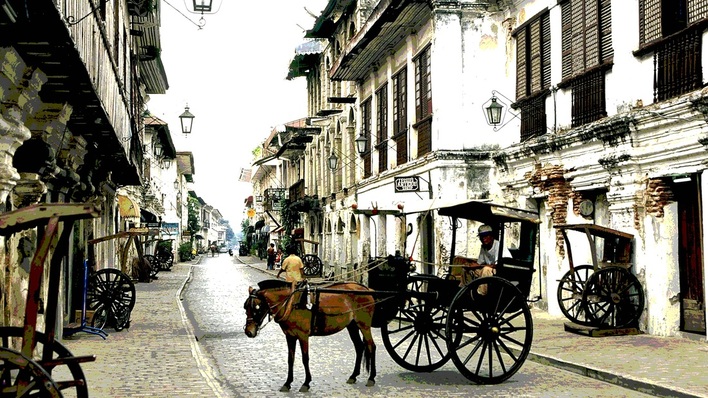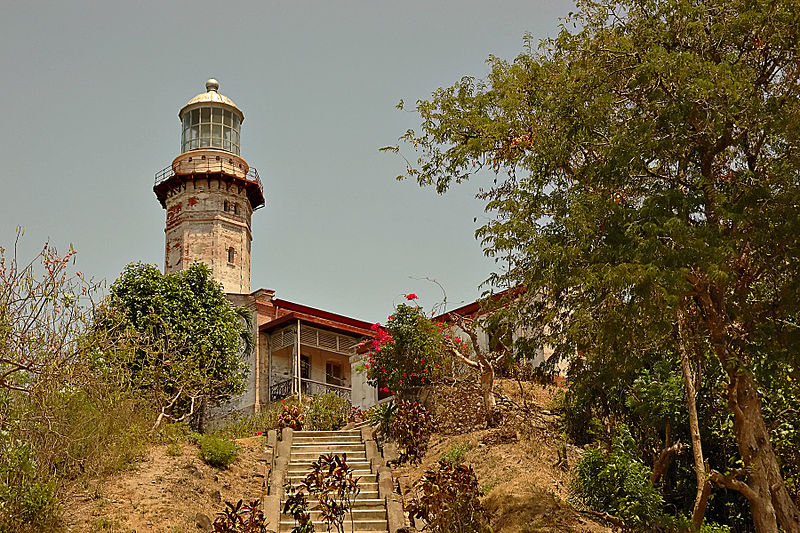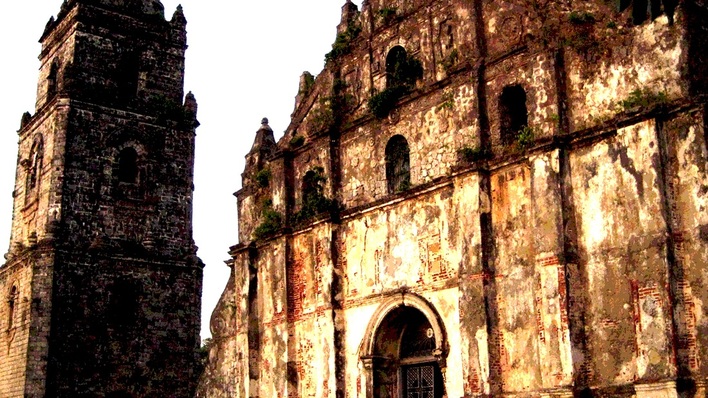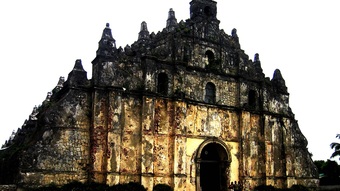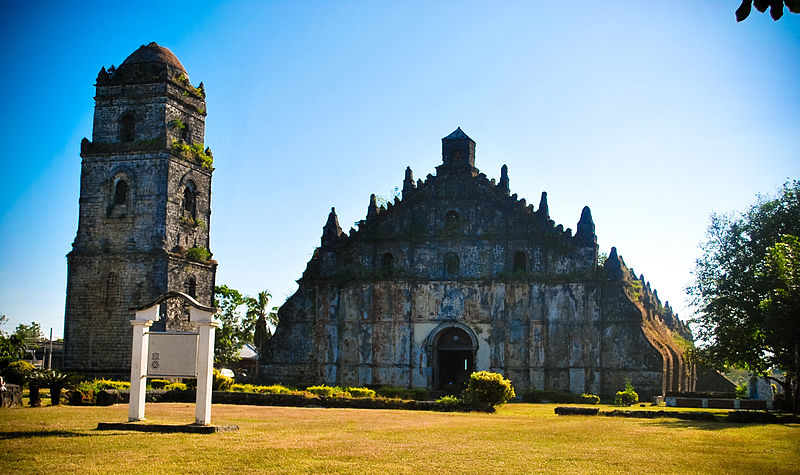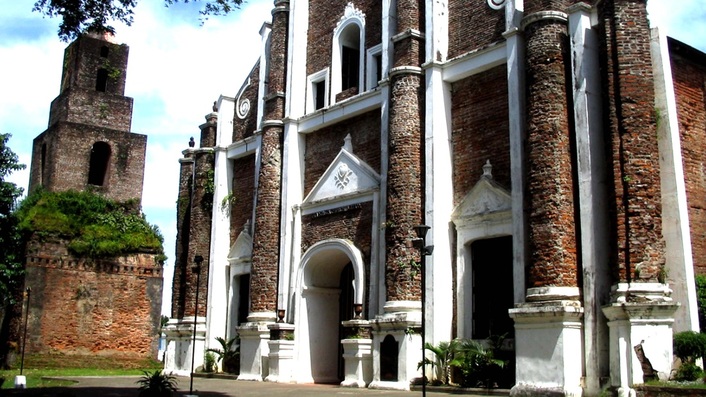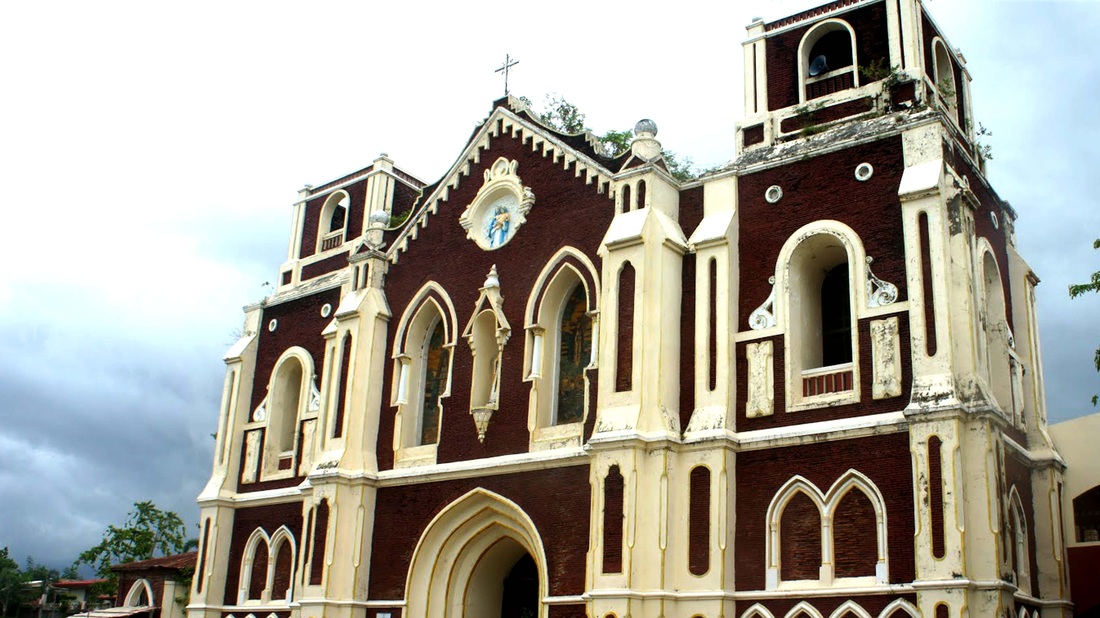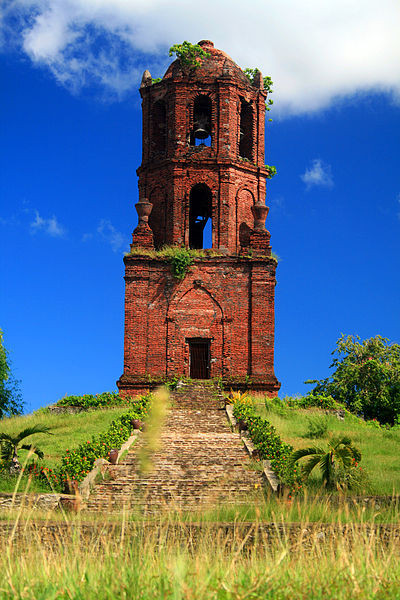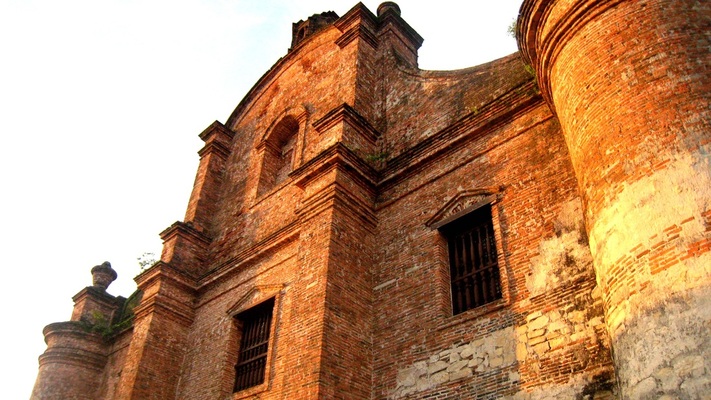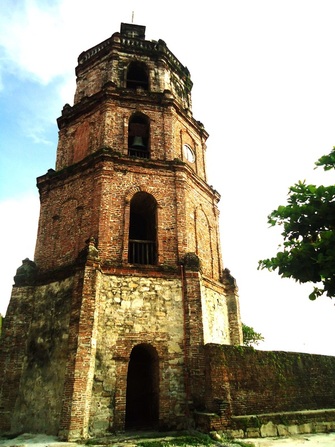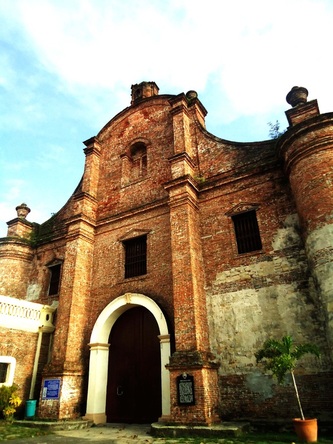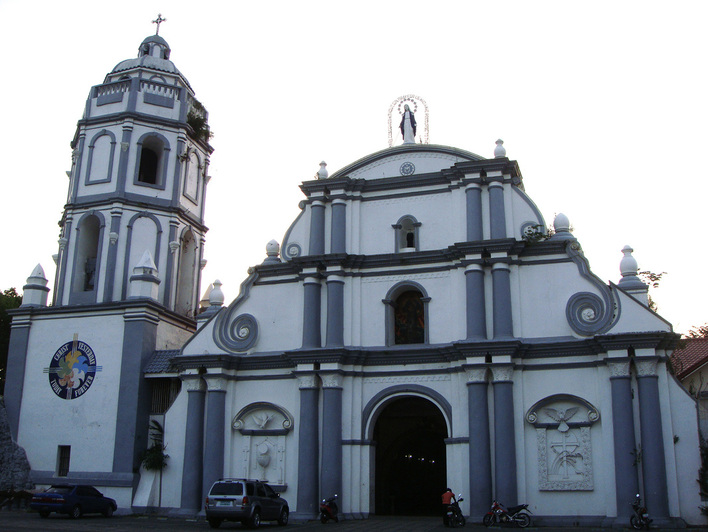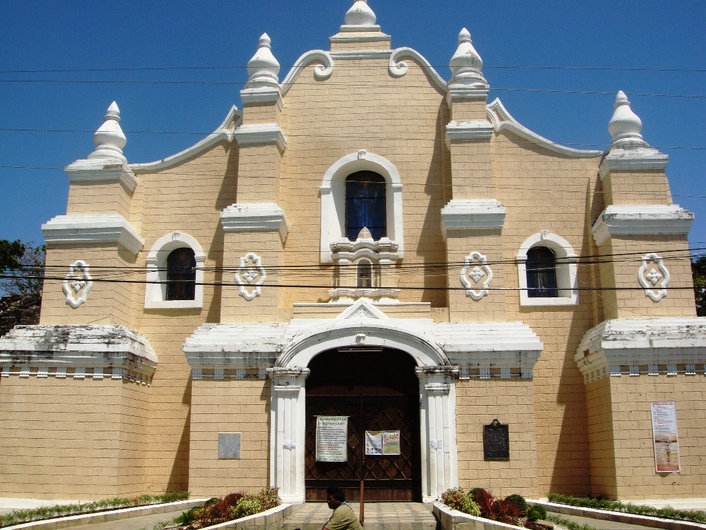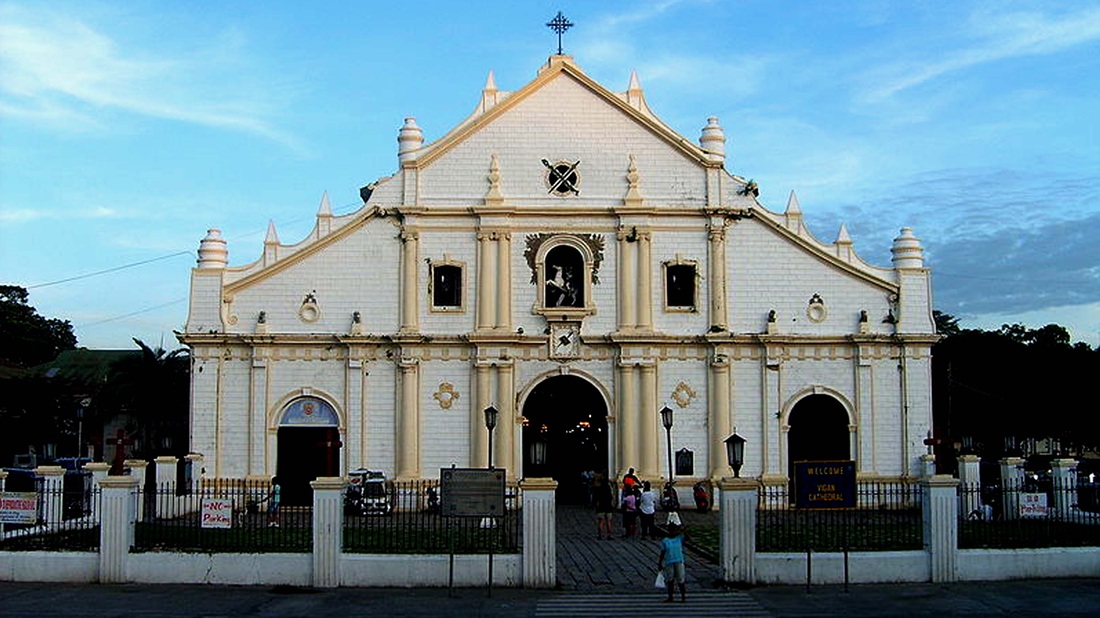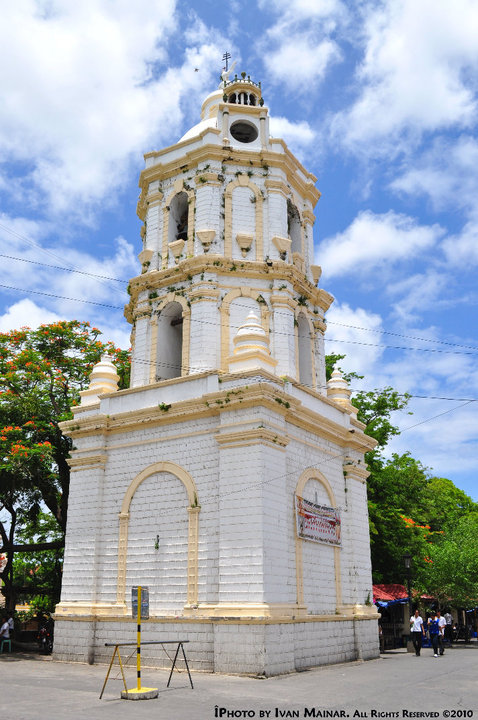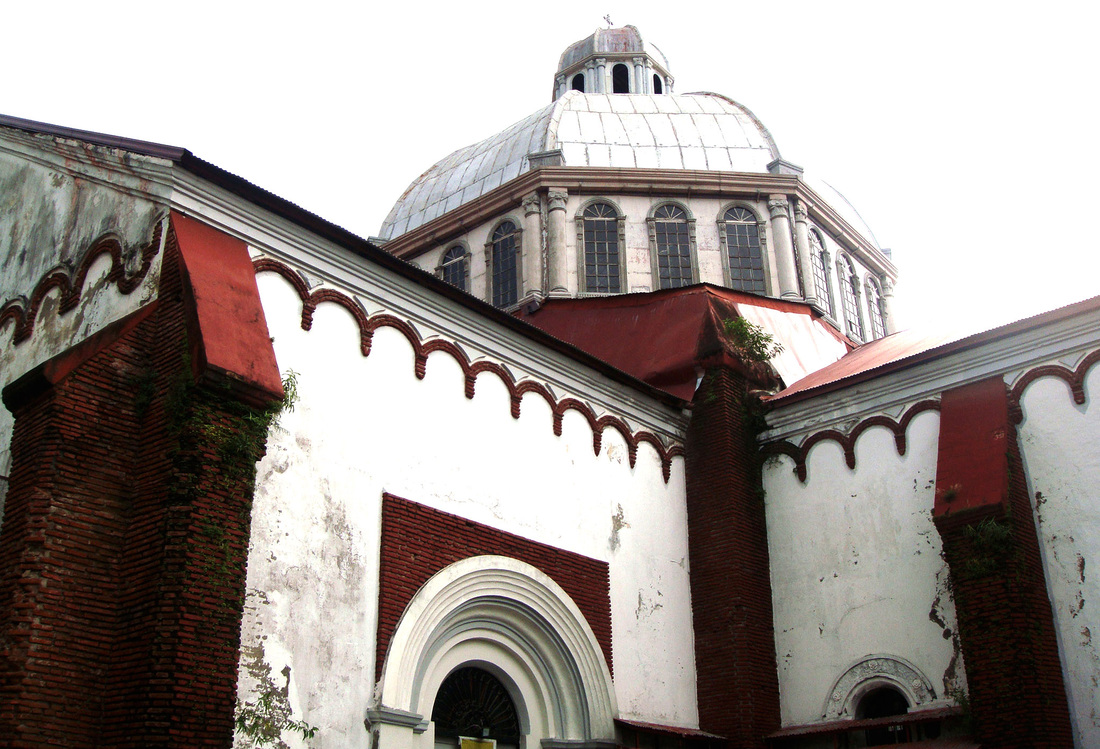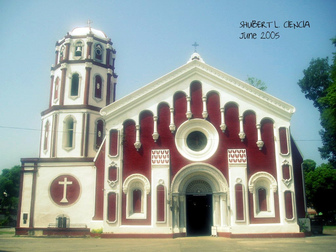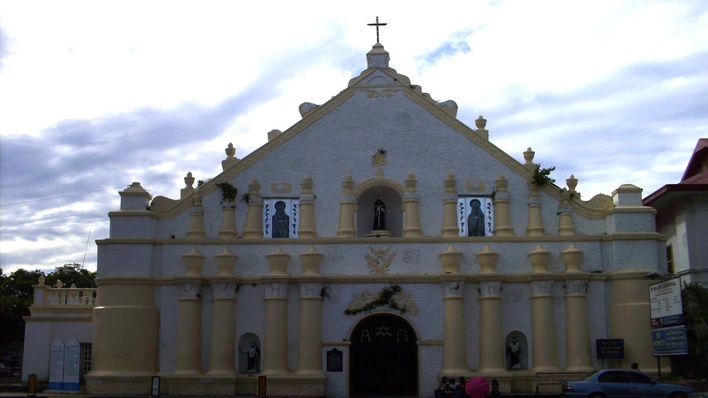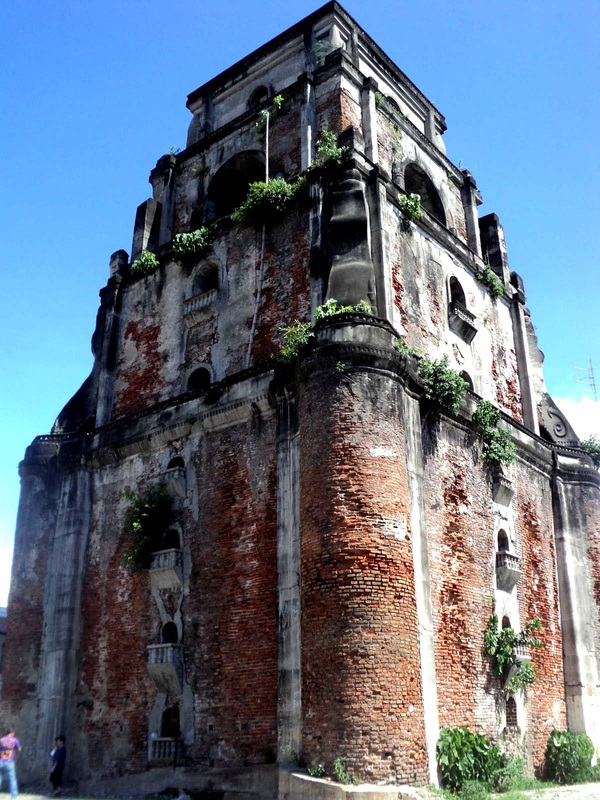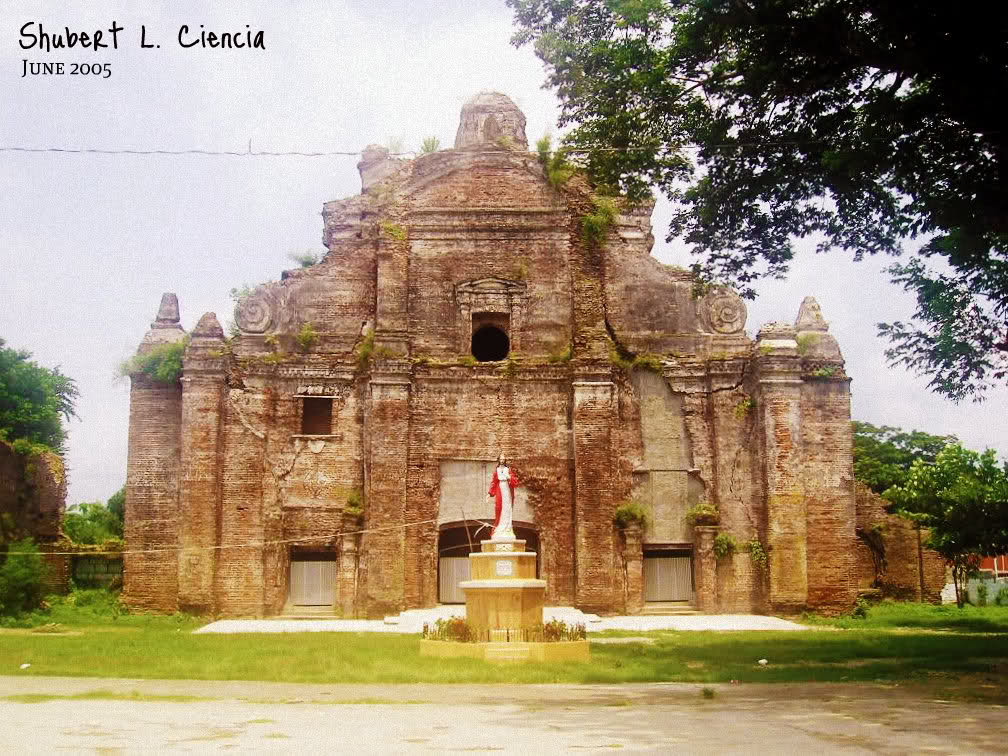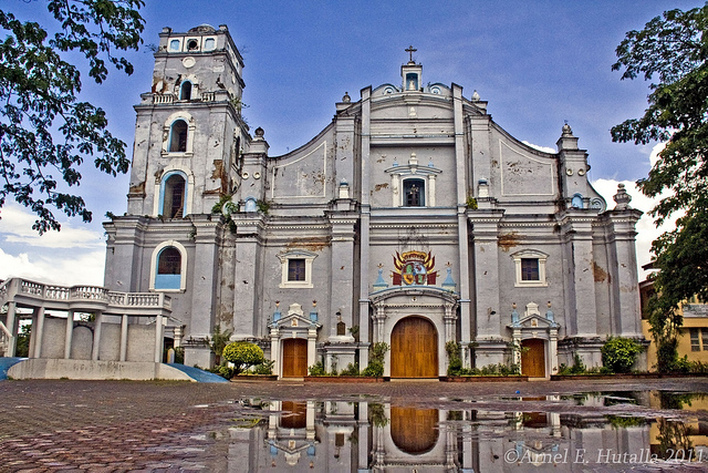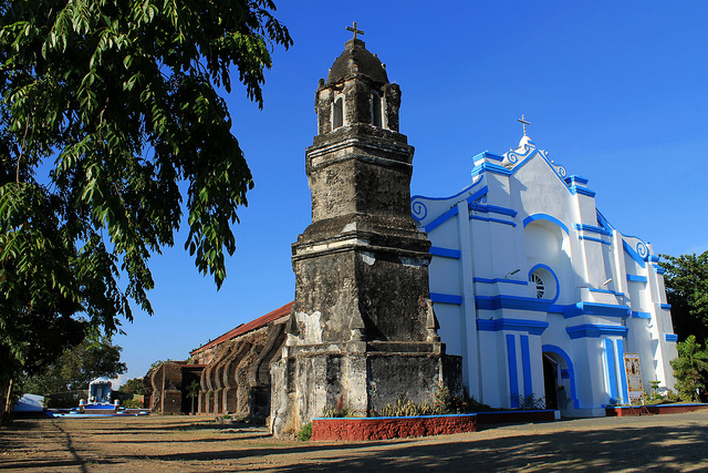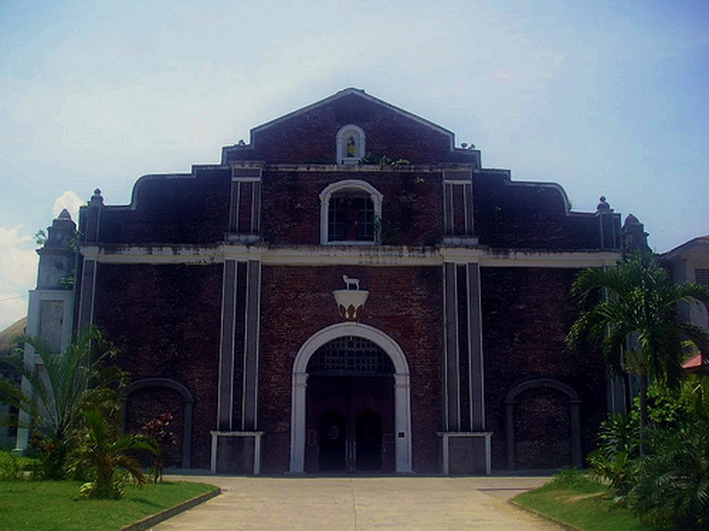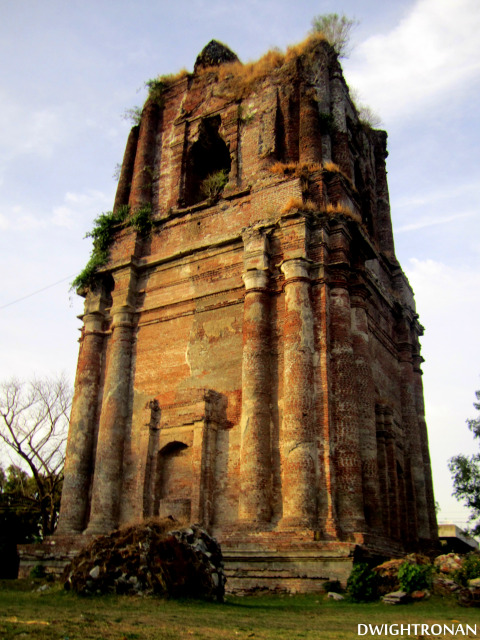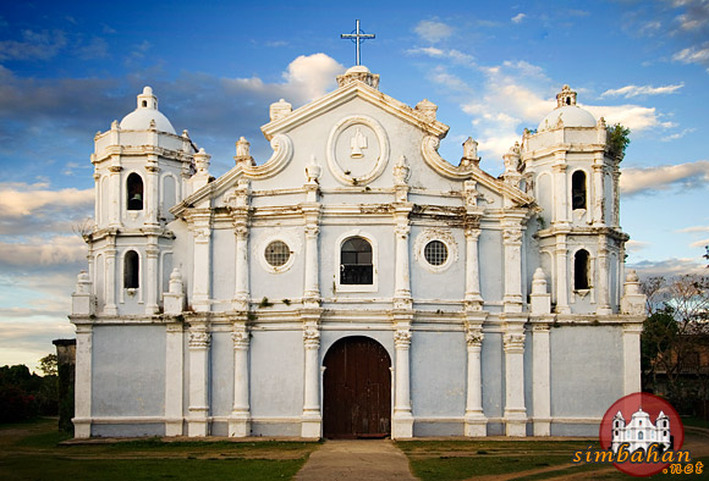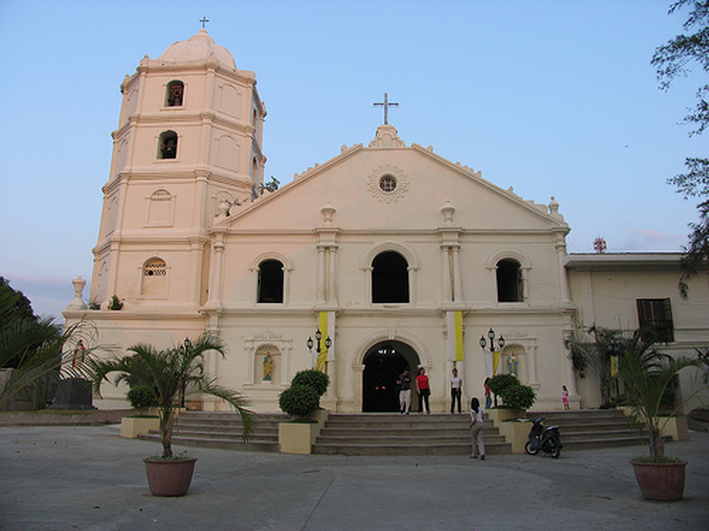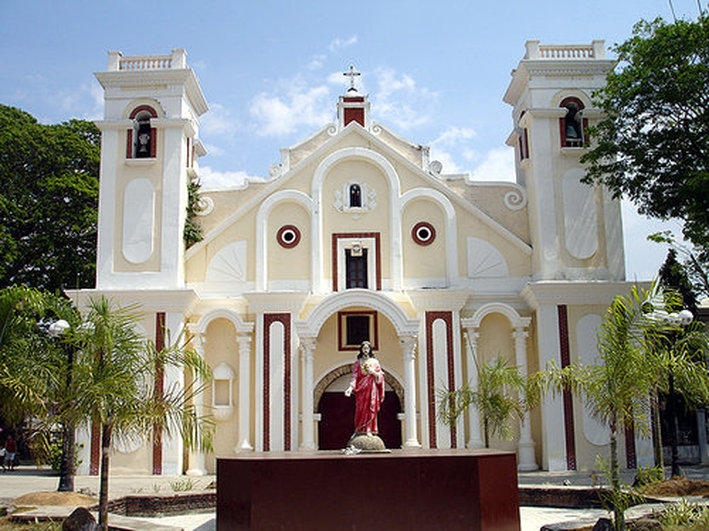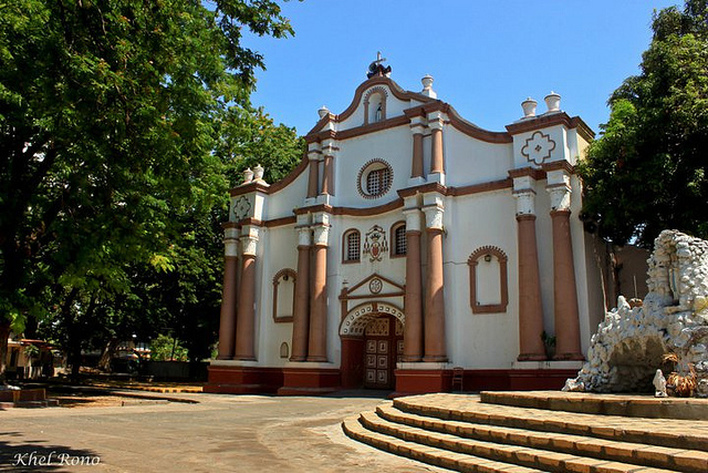The Ilocos region or Region I (Ilokano: Rehion ti Ilocos, or Deppaar ti Ilocos ; Pangasinan: Rihiyon na Sagor na Baybay na Luzon (Region at the Northwest Coast of Luzon)) is a Region of the Philippines and is located in the northwest of Luzon. It borders to the east the regions of the Cordillera Administrative Region and Cagayan Valley and to the south the region of Central Luzon. To the west north is the South China Sea.
The region is composed of four provinces, namely: Ilocos Norte, Ilocos Sur, La Union and Pangasinan. Its regional center is San Fernando City, La Union. Ilocano speakers compose 66% of the region, and Pangasinan speakers are 27%, and the Tagalogs compose 3%.
Region I occupies the narrow plain between the Cordillera Central mountain range and the South China Sea. It also occupies the northern portion of the Central Luzon plain, to the north-east of the Zambales Mountains.
Lingayen Gulf is the most notable body of water in the region and it contains a number of islands, including the Hundred Islands National Park. To the north of the region is Luzon Strait.
The Agno river runs through Pangasinan and empties into the Lingayen Gulf. The river flow into a broad delta in the vicinity of Lingayen and Dagupan City.
The region is composed of four provinces, namely: Ilocos Norte, Ilocos Sur, La Union and Pangasinan. Its regional center is San Fernando City, La Union. Ilocano speakers compose 66% of the region, and Pangasinan speakers are 27%, and the Tagalogs compose 3%.
Region I occupies the narrow plain between the Cordillera Central mountain range and the South China Sea. It also occupies the northern portion of the Central Luzon plain, to the north-east of the Zambales Mountains.
Lingayen Gulf is the most notable body of water in the region and it contains a number of islands, including the Hundred Islands National Park. To the north of the region is Luzon Strait.
The Agno river runs through Pangasinan and empties into the Lingayen Gulf. The river flow into a broad delta in the vicinity of Lingayen and Dagupan City.
History
Region 1 was first inhabited by the aboriginal Negritos before they were pushed by successive waves of Malay/Austronesian immigrants that penetrated the narrow coast. Tingguians in the interior, Ilocanos in the north, and Pangasinense in the south settled the region.
From the data on the population distribution of Region 1, it is clear that not all the inhabitants are Ilocanos. Around one-third are non-Ilocanos and yet there is a popular misconception that all the inhabitants are Ilocanos. The use of the term Ilocos Region promotes the wrong notion that all the residents of Region 1 are Ilocanos. Before the administration of Ferdinand Marcos, Pangasinan was not a part of the region.
The Spanish arrived in the 16th century and established Christian missions and governmental institutions to control the native population and convert them to the Roman Catholic Church. Present-day Vigan City in Ilocos Sur province became the bishopric seat of Nueva Segovia. Ilocanos in the northern parts were less easily swayed, however, and remained an area filled with deep resentments against Spain. These resentments bubbled to the surface at various points in the Ilocos provinces' history as insurrections, most notably that of Andres Malong and Palaris of Pangasinan, Diego Silang and his wife Gabriela Silang in 1764, and the Basi Revolt in the 19th century. However, it was the Pangasinenses in the south who were the last to be stand against the Spaniards.
In 1901, the region came under American colonial rule, and in 1941, under Japanese occupation.
During 1945, the combined American and the Philippine Commonwealth troops including with the Ilocano and Pangasinese guerillas liberated the Ilocos Region from Japanese forces during the Second World War.
Several modern presidents of the Republic of the Philippines hailed from the Region: Elpidio Quirino, Ferdinand Marcos, and Fidel V. Ramos.
Before the formation of the Cordillera Administrative Region, Region 1 also included the provinces of Abra, Mountain Province, and Benguet. Before Region 1 was modified by Ferdinand Marcos, Pangasinan was not part of the region.
From the data on the population distribution of Region 1, it is clear that not all the inhabitants are Ilocanos. Around one-third are non-Ilocanos and yet there is a popular misconception that all the inhabitants are Ilocanos. The use of the term Ilocos Region promotes the wrong notion that all the residents of Region 1 are Ilocanos. Before the administration of Ferdinand Marcos, Pangasinan was not a part of the region.
The Spanish arrived in the 16th century and established Christian missions and governmental institutions to control the native population and convert them to the Roman Catholic Church. Present-day Vigan City in Ilocos Sur province became the bishopric seat of Nueva Segovia. Ilocanos in the northern parts were less easily swayed, however, and remained an area filled with deep resentments against Spain. These resentments bubbled to the surface at various points in the Ilocos provinces' history as insurrections, most notably that of Andres Malong and Palaris of Pangasinan, Diego Silang and his wife Gabriela Silang in 1764, and the Basi Revolt in the 19th century. However, it was the Pangasinenses in the south who were the last to be stand against the Spaniards.
In 1901, the region came under American colonial rule, and in 1941, under Japanese occupation.
During 1945, the combined American and the Philippine Commonwealth troops including with the Ilocano and Pangasinese guerillas liberated the Ilocos Region from Japanese forces during the Second World War.
Several modern presidents of the Republic of the Philippines hailed from the Region: Elpidio Quirino, Ferdinand Marcos, and Fidel V. Ramos.
Before the formation of the Cordillera Administrative Region, Region 1 also included the provinces of Abra, Mountain Province, and Benguet. Before Region 1 was modified by Ferdinand Marcos, Pangasinan was not part of the region.
Ilocos has more to offer aside from its rich culture and top tourist destination. One thing that always makes me dream of going one day to Ilocos Region is its old and historical churches. I do believe that once you have gone to those century old churches, its as if you have touched the present and the past of that place because churches were the first witness of a towns way to prosperity. It also serves as a sanctuary for all its people since its establishment. Those facade and belfry were s strong as the Filipinos. And above all, its the home of he Almighty God.
Historical Churches
1. Paoay Church (St. Augustine Church). Paoay, Ilocos Norte
Paoay Church is the Roman Catholic parish church of the municipality of Paoay, Ilocos Norte in the Philippines. Completed in 1710, the church is famous for its distinct architecture highlighted by the enormous buttresses on the sides and back of the building. In 1993, the church was designated as a UNESCO World Heritage Site as one best examples of the Baroque Churches of the Philippines.
Paoay church is prime example of Earthquake Baroque architecture, which is the Philippine interpretation of the European Baroque adapted to the seismic condition of the country. Destructive earthquakes are common and have destroyed earlier churches all throughout the country. Aside from Baroque, the church facade also exudes Javanese architecture reminiscent of Borobudur of Java.
Paoay church is prime example of Earthquake Baroque architecture, which is the Philippine interpretation of the European Baroque adapted to the seismic condition of the country. Destructive earthquakes are common and have destroyed earlier churches all throughout the country. Aside from Baroque, the church facade also exudes Javanese architecture reminiscent of Borobudur of Java.
2. Sarrat Church ( Sta. Monica Parish Church). Sarrat, Ilocos Norte
Sta. Monica Parish Church is a red-brick church built in neo-classical style. It was built in 1779 and was originally known as San Miguel church. Together with the church convent, which is connected to the church with an elevated 3-level brick stairway, forms part of the Sta. Monica Church Complex.
The parish church of Sta. Monica is renowned to be the largest church in the whole of Ilocos province. It is located at Brgy San Leandro (Poblacion) in Sarrat, Ilocos Norte and is 7 km east of Laoag City.
In June 1983, Sta Monica Parish church was the setting of the grand wedding of Gregorio Araneta and Irene Marcos. The event was eventually considered as the "wedding of the century".
The parish church of Sta. Monica is renowned to be the largest church in the whole of Ilocos province. It is located at Brgy San Leandro (Poblacion) in Sarrat, Ilocos Norte and is 7 km east of Laoag City.
In June 1983, Sta Monica Parish church was the setting of the grand wedding of Gregorio Araneta and Irene Marcos. The event was eventually considered as the "wedding of the century".
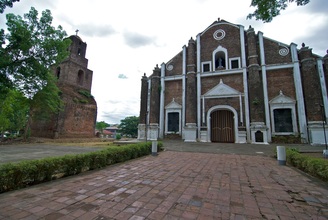
A devastating earthquake hit the province of Ilocos Norte on August 17, 1983, which recorded a magnitude of 5.3 (MI) on the Richter Scale and an intensity 7 on the Rossi-Forel scale. The tremor was strong enough to sustain a major structural damage on the church's facade as well as toppling down the bell tower.
Its rich heritage and intricate details of architecture, coupled with the other sets of criteria mandated by the National Museum Act of 1998, made the Sta. Monica Church Complex to the list of Important Cultural Property. The members of the deciding panel included Architect Augusto F. Villalon, Fr. Milan Ted D. Torralba, Ms. Anna Maria L. Harper, Fr. Rene B. Javellana and Mr. Cecilio G. Salcedo. Unveiling of the Important Cultural Property marker was held on September 27, 2009 by the National Museum director and was witnessed by the local government officials.
Its rich heritage and intricate details of architecture, coupled with the other sets of criteria mandated by the National Museum Act of 1998, made the Sta. Monica Church Complex to the list of Important Cultural Property. The members of the deciding panel included Architect Augusto F. Villalon, Fr. Milan Ted D. Torralba, Ms. Anna Maria L. Harper, Fr. Rene B. Javellana and Mr. Cecilio G. Salcedo. Unveiling of the Important Cultural Property marker was held on September 27, 2009 by the National Museum director and was witnessed by the local government officials.
3. Bantay Church or Sanctuary of Nuestra Señora de La Caridad. Bantay, Ilocos Sur
The Parish of Bantay, Ilocos Sur was founded in 1593 and was named Saint Augustine de Hippo, the Doctor of Grace, as the Patron Saint by the Augustinian friars who established it. Fr. Montoya was the first parish priest with Fr. Geronimo Cavero as his assistant. In a report by Bishop Domingo de Soria, O.P. on August 15, 1613, the population of Bantay was 4,000 souls under the care of three priests. Vigan was only 2,000 souls. This is explained by three facts that by then, Bantay parish was very extensive. The following parishes were originally its “visitas” - Magsingal separated in 1676; Santo Domingo separated in 1742; San Ildefonso separated in 1769; San Vicente separated in 1795; and Santa in 1795. One of the three ministers of the Gospel for the Bantay Area was Father Francisco Lopez, a great Augustinian Philologist with the help of Pebro Bucaneg, the blind genius of the Ilocano tongue took parts in the translation of the “Catechism” which was originally written by Robert Cardinal Bellarmine.
| The translated catechism was approved from the convent of Bantay in 1616. The book in the Malayan script and Spanish alphabet was first published in 1621. The Bellarmine catechism was the first book in Ilocano to be printed and its influence on the morality, culture and language of the entire Ilocos is immeasurable. Up to this day, we Ilocanos still say all the Common prayers as Fr. Lopez and Bucaneg translated them. Fr. Mariano in his History of the Works of the Religious Orders in the Philippines said that the old church was in the form of a cross (con crucero) but it was rebuilt almost completely by Fathers Eduardo Navarro and Lisardo Villanueva. The ruins of the section that would form the arms of the across are still standing. In 1660, Andres Malong, of Pangasinan, revolted against Spanish and proclaimed himself king of the province. He bestowed the title of Conde to Pedro Gumapos of Agoo and sent him with 3,000 men to invade Ilocos and Cagayan. |
In the army of Gumapos was a great number of Calanasans, head-hunting Tinguians, and Aetas from the wilds of Zambales. These savages came killing pillaging and burning until Badoc, Ilocos Norte. Juan Manzano, a lieutenant of Gumapos, attacked Bantay on January 22, 1661, leaving 800 dead I the area.
He buried everything. Only one tiled house and the church with its convent were left standing. The old novena of Our Lady of Charity expressly says that the church was saved through intervention. The Zambales repeatedly tried to set fire to the church at least three times, but it would not burn through the cogoon roofing was very dry. Terrified as such an inexplicable phenomenon, the Calanasans finally fled. This incident, Rev. Fr. Pedro Murillo has written in his book,Historia de Filipinas de la Campania de Jesus. They burned Bantay, and though they set fire times to the church, It was delivered by Nuestra Señora de la Caridad through her special protection. At the end of the last century, we find the church roofed with split bamboo and nipa.
The late most Rev. Alfredo Versoza roofed it with galvanized iron. He was the parish priest of Bantay. In April 15, 1945, during the battle for liberation of Ilocos Sur, three big incendiary bombs hit the Church and convent but not one of them exploded. Fifty meter away from the buildings five others exploded with great force. Because of the concussions, the roof put on by Bishop Versoza was indirectly knocked down. Even the convent, the altars and the pulpits crashed down. Rev. Jose Brillantes y Bello made a temporary chapel, using the fallen roofing for its roof and walls. It served for five years. The church with new roofing was raised higher to allow the construction of the tall Gothic design of the interior. It is a monument to the sacrifices of the any devotees of our Lady of Charity from Bantay, Vigan and other parishes of Nueva Segovia, under the supervision of Fr. Brillantes and Most Rev. Santiago C. Sancho. The church that was damaged during the World War II was reconstructed in 1950.
The restored façade is of neo-gothic design mixed with pseudo-Romanesque materials and elements.Its grandiose afforded a reminiscent of the old Spanish architecture using indigenous materials which are bucks and slime. The picturesque belfry sits on a hilltop overlooking a vivid vast green pastureland and the mountain view of the province of Abra. It was used as a watcher tower for invading enemy forces during world war I and II because of its strategic location.
He buried everything. Only one tiled house and the church with its convent were left standing. The old novena of Our Lady of Charity expressly says that the church was saved through intervention. The Zambales repeatedly tried to set fire to the church at least three times, but it would not burn through the cogoon roofing was very dry. Terrified as such an inexplicable phenomenon, the Calanasans finally fled. This incident, Rev. Fr. Pedro Murillo has written in his book,Historia de Filipinas de la Campania de Jesus. They burned Bantay, and though they set fire times to the church, It was delivered by Nuestra Señora de la Caridad through her special protection. At the end of the last century, we find the church roofed with split bamboo and nipa.
The late most Rev. Alfredo Versoza roofed it with galvanized iron. He was the parish priest of Bantay. In April 15, 1945, during the battle for liberation of Ilocos Sur, three big incendiary bombs hit the Church and convent but not one of them exploded. Fifty meter away from the buildings five others exploded with great force. Because of the concussions, the roof put on by Bishop Versoza was indirectly knocked down. Even the convent, the altars and the pulpits crashed down. Rev. Jose Brillantes y Bello made a temporary chapel, using the fallen roofing for its roof and walls. It served for five years. The church with new roofing was raised higher to allow the construction of the tall Gothic design of the interior. It is a monument to the sacrifices of the any devotees of our Lady of Charity from Bantay, Vigan and other parishes of Nueva Segovia, under the supervision of Fr. Brillantes and Most Rev. Santiago C. Sancho. The church that was damaged during the World War II was reconstructed in 1950.
The restored façade is of neo-gothic design mixed with pseudo-Romanesque materials and elements.Its grandiose afforded a reminiscent of the old Spanish architecture using indigenous materials which are bucks and slime. The picturesque belfry sits on a hilltop overlooking a vivid vast green pastureland and the mountain view of the province of Abra. It was used as a watcher tower for invading enemy forces during world war I and II because of its strategic location.
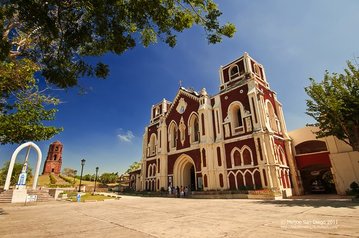
The Bantay Church and bell tower are monumental witnesses to various atrocities, uprising and others. In the preparation of the Silver Jubilee of the Canonical Coronation of our Lady of Charity January 10, 1981, the sorry state of the church building cried for some repairs. The renovation included repair of the roof. The accumulated rust had been patched, and a protective coat of paint had been laid on, repair of the façade- a thick crust of moss and lichen had been cleared away, the bricks had been resurfaced and a layer of paint had been applied to maintain its architectural design, restoration of the lateral turrets – deep cracks and wide gaps have been refilled, the demolished superstructures had been restored, refurbishing the intrerior, peeled off plastering had been patched, the walls had been repainted, ad a marbleized altar has been erected, repair of the belfry, the blackening layer of moss and the dense overgrowth of weeds have been cleared away, knocked off portions of the cornice and frieze have been restored,pock mocks and cracks have been patched and the bricks have been resurfaced. Numerous improvements were made in the church, convent and bell tower. Inside the church particularly in the altar, golden mouldings were placed that signifies the Golden Canonical Coronation Anniversary of our Lady of Charity. Chandeliers were changed to the design of the old ones made by Rev. Brillantes Bello. Landscaping in front of the church and convent made the parish beautiful. Construction of comfort rooms for the parishioners and visitors. The second floor of the convent had a face lift especially stairs, landing with its new sofa, the kitchen modernized and the two (2) ruined rooms had been restored including the old rooms. The floor area of the template had been expanded and flowering plants have been planted on the plant boxes around it. These improvements were made possible through the initiative of Fr. Felecisimo Ferrer, Parish Priest and Fr. Constantino Atinaja, Assistant Parish Priest.
4. Nuestra Señora dela Asuncion Church. Sta. Maria, Ilocos Sur
The Santa Maria Church is a great attraction to both the traveler and the faithful in Santa Maria, Ilocos Sur. It is not only a reminiscent of the four centuries of Spanish domination of that area but also a unique structure with a diversified architectural design and built of heavy stones and mortar.
Like many of its sister churches in the Ilocos Region, the Santa Maria Church is of lesser proportion, flamboyant in scale and less stunning in the facade and expresses a tightness of space. It shows also a simplified and primitive form of architectural design.
The Church of Santa Maria is a reductable structure. In form and utility, it is built to resemble a travelin or fortin which usually form an important part of the stonewall fortresses used for the protection of the early Spanish settlements against enemy attacks. It was built on top of a hill not only as a look-out and breastwork but later as a religious center during the early administration of the region by both the friars and soldiers of Spain.
The influx of the settlers after the full conquest of the Ilocos Region by the Spaniards greatly increased the population of Santa Maria. Besides economic progress, evangelical missions were expanded. The town’s proximity to the interior settlements which were the targets of the earlier evangelical missionaries made Santa Maria as the center of both the religious and commercial activities. In 1567, Santa Maria was a mere visita of Narvacan; and independent ministry in 1760; and in 1767, it was once again a well- organized township. It had its own minister.
Like many of its sister churches in the Ilocos Region, the Santa Maria Church is of lesser proportion, flamboyant in scale and less stunning in the facade and expresses a tightness of space. It shows also a simplified and primitive form of architectural design.
The Church of Santa Maria is a reductable structure. In form and utility, it is built to resemble a travelin or fortin which usually form an important part of the stonewall fortresses used for the protection of the early Spanish settlements against enemy attacks. It was built on top of a hill not only as a look-out and breastwork but later as a religious center during the early administration of the region by both the friars and soldiers of Spain.
The influx of the settlers after the full conquest of the Ilocos Region by the Spaniards greatly increased the population of Santa Maria. Besides economic progress, evangelical missions were expanded. The town’s proximity to the interior settlements which were the targets of the earlier evangelical missionaries made Santa Maria as the center of both the religious and commercial activities. In 1567, Santa Maria was a mere visita of Narvacan; and independent ministry in 1760; and in 1767, it was once again a well- organized township. It had its own minister.
According to the legend, before the Santa Maria Church was built on its present site, the Virgin Mary was enshrined in a distant place, Bulala. It usually happened that the Virgin Mary disappeared from her place of enthronement only to be found perched on a guava tree that grew where the present chapel of the Santa Maria Church is located. This story is believed by many of the people which had led them to erect the church in its present site.
In 1810, a bell tower was built beside the church.
It was furnished a bell in 1811. After it was remodeled in 1863, its foundation must have gradually settled down making the imposing structure slightly leaning or tilting as it appears today.
Partly blocking the frontal view of the facade of Santa Maria Church is the convent. It is accessible from the Church by a structural bridge built over what might have been a deep channel or ditch. In the early days of the colonization, the convent was the seat of the ecclesiastical administration besides serving as a “ home or retreat house of the silvery haired or aged ministers of God upon their retirements or after coming from their arduous and hazardous evangelical labors in the hinterlands.
The builders of the Santa Maria Church must have conceived of making the church last for many years. The long 81 spaces in length and 16 meters in width.
The grand three flight stairway approaches the church doorway and two others behind the edifice- one along the space leading to the cemetery below and from the stairway that approaches the eastern side, a sweeping view of the plain and the town of Santa Maria is beheld. A narrow roadway leads up to the church door and used only by some very special church goers in their stylist vehicles.
A cemetery abandoned and evergreen with brush and weeds lies at the foot of the hill and connected with the church by an old and worn-out but impressive stairway now unused and all in ruins. It is perhaps the limitation of the space on top of the hill that brought about the constricted layout and construction of the Santa Maria Church.
The one-nave church, heavily reinforced by massive buttresses from the exterior is severely plain and the low side, its solidity is relieved only by the lateral buttresses, somehow break up the walls into regular sequence of alternating masses, creating a simple rhythmic movement
In 1810, a bell tower was built beside the church.
It was furnished a bell in 1811. After it was remodeled in 1863, its foundation must have gradually settled down making the imposing structure slightly leaning or tilting as it appears today.
Partly blocking the frontal view of the facade of Santa Maria Church is the convent. It is accessible from the Church by a structural bridge built over what might have been a deep channel or ditch. In the early days of the colonization, the convent was the seat of the ecclesiastical administration besides serving as a “ home or retreat house of the silvery haired or aged ministers of God upon their retirements or after coming from their arduous and hazardous evangelical labors in the hinterlands.
The builders of the Santa Maria Church must have conceived of making the church last for many years. The long 81 spaces in length and 16 meters in width.
The grand three flight stairway approaches the church doorway and two others behind the edifice- one along the space leading to the cemetery below and from the stairway that approaches the eastern side, a sweeping view of the plain and the town of Santa Maria is beheld. A narrow roadway leads up to the church door and used only by some very special church goers in their stylist vehicles.
A cemetery abandoned and evergreen with brush and weeds lies at the foot of the hill and connected with the church by an old and worn-out but impressive stairway now unused and all in ruins. It is perhaps the limitation of the space on top of the hill that brought about the constricted layout and construction of the Santa Maria Church.
The one-nave church, heavily reinforced by massive buttresses from the exterior is severely plain and the low side, its solidity is relieved only by the lateral buttresses, somehow break up the walls into regular sequence of alternating masses, creating a simple rhythmic movement
5. St. John of Sahugan Church. Candon, Ilocos Sur
St. John of Sahagun was built in 1695 by Father Pedro Bravo. It was damaged by an earthquake in 1707 but was rebuilt in 1709. The Church has a baroque-style facade. The four-storey octagonal belltower has an alternating open and blind apertures, a balustrade and is topped by a campanille.
6. Narcavan Church. Narcavan, Ilocos Sur
Narvacan was discovered by a Spanish expeditionary force sent from Vigan by the military officer and navigator, Captain Juan de Salcedo. The Spanish expeditionary force was shipwrecked along the town's coast. When they were being rescued by the natives, the Spaniards asked the natives what was the name of their place. The resident's leader replied in an Ilocano dialect by asking the Spaniards "Nalbakan?" (Are you shipwrecked?). The Spaniards thought this to be the answer to their question, and from then on the place was referred to as Narvacan.
Salcedo befriended the small tribe of indigenous valley peoples that resided in the area while Spanish families established a township in 1576. As part of the modern township, a Roman Catholic parish was established by the Augustinian religious order on 25 April 1587. The Narvacan parish would become one of the first Roman Catholic parishes in present-day Ilocos Sur.
Narvacan was organized under the traditions of the royal government of Spain. The Habsburg royal family served as the heads of state which in turn appointed Santiago de Vera as President of the Royal Audiencia – governor over the region in which Narvacan was situated. In 1589, Governor Vera appointed Nicolas de Figueroa as the first Encomendero de Narvacan – principal administrator of the town and its neighbors in the encomienda system. His role eventually evolved into the office of alcalde.
Salcedo befriended the small tribe of indigenous valley peoples that resided in the area while Spanish families established a township in 1576. As part of the modern township, a Roman Catholic parish was established by the Augustinian religious order on 25 April 1587. The Narvacan parish would become one of the first Roman Catholic parishes in present-day Ilocos Sur.
Narvacan was organized under the traditions of the royal government of Spain. The Habsburg royal family served as the heads of state which in turn appointed Santiago de Vera as President of the Royal Audiencia – governor over the region in which Narvacan was situated. In 1589, Governor Vera appointed Nicolas de Figueroa as the first Encomendero de Narvacan – principal administrator of the town and its neighbors in the encomienda system. His role eventually evolved into the office of alcalde.
7. Saint Paul Metropolitan Cathedral, Vigan City
| St. Paul’s Metropolitan Cathedral was built by the Augustinian clergy around 1790 and like the St. William’s Cathedral, it has features a design intended to minimize earthquake damage that was referred to as “earthquake baroque”. Furthermore, it also features the Neo-Gothic and pseudo Romanesque motifs. There are brass communion handrails copied from China, complete with Chinese characters scribbled by its makers. In the south of the cathedral lies the eight-sided bell tower used as a safety measure of the church. It was said to be built separately so that in any event of an earthquake, it would not topple into the church. The design said to have a Chinese Feng Shui influences. Lies inside the church is a tombstone of the great Ilocano poet Leona Florentino. It is also in this church where Vigan’s Beloved late Governor Floro Crisologo was gunned down while he knelt on a pew inside the Cathedral in 1970. |
8. Santa Lucia Church. Sta. Lucia, Ilocos Sur
| St. Lucy the Martyr Church was built by Father Juan Pascula Barreda and Father Manuel Arguelles in 1887. Its dome and ceiling was repaired and the surroundings were reinforced by Father Venusto Mata. its bell tower was damaged by an earthquake but was repaired eventually. It's one of the most beautiful churches in Ilocos. Its interior has a painted ceiling, pulpit and a carved retablo. The Church has an image of the Dark Virgin of Santa Lucia, the patroness of those with failing eyesight. |
9. Saint William's Cathedral & The Sinking Bell Tower of Laoag City, Ilocos Norte
| Laoag Cathedral, canonically known as St. William Cathedral is a church in Laoag City, Ilocos Norte, Philippines. It was built in 1612 by Augustinian friars to replace a wooden chapel. It is known for its Italian Renaissance design and its Sinking Bell Tower, which sinks into the ground at a rate of an inch a year. St. William Cathedral serves as the seat or central church of the Roman Catholic Diocese of Laoag. Since Most Rev. Sergio Utleg's transfer to the Archdiocese of Tuguerarao, the diocese at present is vacant. The diocesan administrator is Very Rev. Fr. Noel Ian Rabago and the cathedral rector is Very Rev. Fr. Policarpio M. Albano. |
The church has an unusual two-storey façade, supported by two pairs of columns on each side of the arched entrance. The top of the façade holds a recessed niche that showcases the image of the city's patron saint, San Guillermo (Saint William). It has windows made from capiz with wrought iron screens.
The cathedral was built to support a growing Christian population in Laoag, which was known as Ylaua at the time. The settlement was a mission detachment of Vigan during the Spanish era. The church was originally built using lime mixed with molasses for strength, with big stones, gravel and sand. Wood was used for trusses to support the roof, which originally was made of cogon grass and was later replaced with nipa. Much later the roofing was again changed to taleb, a corrugated galvanised iron sheet made with whole bamboo.
The church was damaged by hurricane in 1640, by earthquake in 1706, by fire in 1843. The church was restored in 1880.
The cathedral was built to support a growing Christian population in Laoag, which was known as Ylaua at the time. The settlement was a mission detachment of Vigan during the Spanish era. The church was originally built using lime mixed with molasses for strength, with big stones, gravel and sand. Wood was used for trusses to support the roof, which originally was made of cogon grass and was later replaced with nipa. Much later the roofing was again changed to taleb, a corrugated galvanised iron sheet made with whole bamboo.
The church was damaged by hurricane in 1640, by earthquake in 1706, by fire in 1843. The church was restored in 1880.
10. Dingras Church Ruins. Dingras, Ilocos Norte
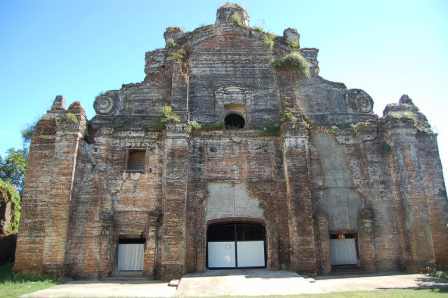
There are conflicting accounts of the history of Dingras Church. One of the earliest records mentioning it states that it was damaged in the earthquake of 1620; thus it had been built prior to that year. In 1710, according to the report of Capitan Don Lucas Mariano de Ochoa, the church was originally constructed by Fray Alonso Cortes, OSA, 30 years before, or between 1678 and 1680. Only the brick walls of the church remained by the time of Ochoa's account. Regalado Trota-José, a noted church historian on the other hand wrote that a brick church was erected in the late 1670s but was damaged in 1707 by an earthquake. From both accounts, this building was the second church of Dingras. The church was again rebuilt, only to be destroyed by fire along with the town.
According to Fr. Pedro Galende, OSA, the present church was built by Fray Damask Vietez, OSA, in 1879. Trota-Jose pointed out that Vieytez died in 1854, thus the church would have been built during his priorship from 1846 to that year.
From 1879 to 1893 and from 1894 to 1898, under the priorship of Fray Ricardo Diaz and Fray Saturnino Franco both from the Order of Saint Augustine, the church underwent renovations such as fixing and replacing the roof with metal sheets.
In 1914, the church was once again destroyed by fire and in 1931, it was damaged by another earthquake which made the church unsafe so that it was later abandoned. A smaller concrete structure was constructed across the street to serve as the church.
According to Fr. Pedro Galende, OSA, the present church was built by Fray Damask Vietez, OSA, in 1879. Trota-Jose pointed out that Vieytez died in 1854, thus the church would have been built during his priorship from 1846 to that year.
From 1879 to 1893 and from 1894 to 1898, under the priorship of Fray Ricardo Diaz and Fray Saturnino Franco both from the Order of Saint Augustine, the church underwent renovations such as fixing and replacing the roof with metal sheets.
In 1914, the church was once again destroyed by fire and in 1931, it was damaged by another earthquake which made the church unsafe so that it was later abandoned. A smaller concrete structure was constructed across the street to serve as the church.
The facade of Dingras church is similar to the structures of other churches in Ilocos. It is Baroque in style with four buttresses. There are three large openings on the lower level and another opening for the choir loft. The facade is further embellished by a curved pediment, and scrolls or the cornice.
In 2009, the Dingras church was set for demolition which was opposed by several organizations including the International Council for Monuments and Sites (Icomos) Philippines and the Heritage Conservation Society (HCS). The original facade was to be demolished rather than conserved and a new church would replace the old structure.
According to architect Manuel Maximo Lopez del Castillo-Noche, a faculty member of the College of Architecture at the University of Santo Tomas, HCS director, and member of Icomos Philippines, the demolition of Dingras church is a threat to other historic buildings in the Philippines.
Del Castillo-Noche advised that the church should be conserved similar to what was done to the Jesuit Church of Saint Paul in Macau.
In 2009, the Dingras church was set for demolition which was opposed by several organizations including the International Council for Monuments and Sites (Icomos) Philippines and the Heritage Conservation Society (HCS). The original facade was to be demolished rather than conserved and a new church would replace the old structure.
According to architect Manuel Maximo Lopez del Castillo-Noche, a faculty member of the College of Architecture at the University of Santo Tomas, HCS director, and member of Icomos Philippines, the demolition of Dingras church is a threat to other historic buildings in the Philippines.
Del Castillo-Noche advised that the church should be conserved similar to what was done to the Jesuit Church of Saint Paul in Macau.
11. St. Nicolas of Tolentino Church. San Nicolas, Ilocos Norte
St. Nicolas of Tolentino Church is one of the churches in the Philippines, named after the patron saint. St. Nicolas' image shows his right hand holding pieces of bread, which he would bless and spread in commemoration of the miracle of the Virgin Mary.
The church was built of stone and brick in 1584 and reconstructed from 1693 to 1703 by Father Antonio Villsnueva. It was hit by an earthquake in in 1707 and was badly damaged by the revolt in Sarrat in 1815. It has a baroque facade which has a Spanish coat of arms in stucco and a semicircular arched entrance.The church's bell tower built by Father Victoriano Garcia, is connected to a convent by a passageway.
The church was built of stone and brick in 1584 and reconstructed from 1693 to 1703 by Father Antonio Villsnueva. It was hit by an earthquake in in 1707 and was badly damaged by the revolt in Sarrat in 1815. It has a baroque facade which has a Spanish coat of arms in stucco and a semicircular arched entrance.The church's bell tower built by Father Victoriano Garcia, is connected to a convent by a passageway.
12. Badoc Church. Badoc, Ilocos Norte
Located at Badoc, Ilocos Norte, this church was formerly called the Sinait Chapel in 1591, became a parochial in 1714. The church is made of brick and stone and was artistically built under the administration of Rev. P. Valentin Beovide. The famous Filipino painter Juan Luna was baptized in this church on October 27, 1857.
13. St. Andrew’s Church and Acrobatic Bell Tower. Bacarra, Ilocos Norte
| The town of Bacarra was founded by Augustinians on 18 September 1590, headed by Fr. Benito Mena who was a native of Vigan. The church dates back to the 16th century. Construction was supervised by Fray Felipe Fernandez of the Order of Saint Augustine. When the first building was destroyed, it was rebuilt in 1700 and was finished by 1706 headed by Fray Diego de Mendrosqueta, Fray Miguel Abiol and Fray Antonio de Villanueva. The church was damaged by an earthquake the following year and later by yet another one. The present church was rebuilt by Fray Juan Martin that was dated around the middle of the 19th century. Indigenous materials were used for the construction. Coral bricks made of sticky clay and molasses mixed with leaves and tree trunks of a tree soaked in water or “sablot” were used instead of cement, granite or adobe stones. The mixture resulted in a sticky fluid which was then combined with lime from ashes of burnt shells. The bricks were pieced together with stucco, the mixture beaten to paste. All the labor was manual. Architecture of the Bell Tower |
Its bell tower, more popularly known as “Torre Ti Bacarra” or “torre”, was the town's most prized heritage. It was constructed by Fr. Bergier, OSA in 1828. It stood 50 meters high with three storeys. It has a 16 x 16 meter base that gradually narrows at the top. Topping it is a heavy bronze bell.
On 19 March 1931, the feast of Saint Joseph, the bell tower suffered its first major destruction. An earthquake caused the tower to have a leaning posture from the earthquake for more than half a century. The locals called it the “Bowing Belltower of Bacarra” while the tourists referred to it as the “Leaning Tower of the North.” In 1971, another earthquake further deformed the tower, yet the ruins attracted even more tourists. After the earthquake, the tower was preserved by placing support on the walls of the remaining structure. In 1981 and on 17 August 1983, another earthquake occurred and the tower finally gave way and was left with its present flattened top.
In 1973, the tower became a national cultural treasure according to Presidential Decree 260.
The parish convent's exterior was made of bricks held together by stucco. The interior was made with fine hardwood. The floor area extends to 900 square meters in two levels. Before being ruined, the convent had an azotea with a staircase.
The convent was formerly occupied by the clergy and church staff. It also served as the school building of the St. Andrew Grade School. In the 1980s, the convent was declared as unsafe for habitatation. The present ground floor of the convent was turned into a parish hall and a smaller part of it was used as a place for religious artifacts.
On 19 March 1931, the feast of Saint Joseph, the bell tower suffered its first major destruction. An earthquake caused the tower to have a leaning posture from the earthquake for more than half a century. The locals called it the “Bowing Belltower of Bacarra” while the tourists referred to it as the “Leaning Tower of the North.” In 1971, another earthquake further deformed the tower, yet the ruins attracted even more tourists. After the earthquake, the tower was preserved by placing support on the walls of the remaining structure. In 1981 and on 17 August 1983, another earthquake occurred and the tower finally gave way and was left with its present flattened top.
In 1973, the tower became a national cultural treasure according to Presidential Decree 260.
The parish convent's exterior was made of bricks held together by stucco. The interior was made with fine hardwood. The floor area extends to 900 square meters in two levels. Before being ruined, the convent had an azotea with a staircase.
The convent was formerly occupied by the clergy and church staff. It also served as the school building of the St. Andrew Grade School. In the 1980s, the convent was declared as unsafe for habitatation. The present ground floor of the convent was turned into a parish hall and a smaller part of it was used as a place for religious artifacts.
14. San Vicente Ferrer Church. San Vicente, Ilocos Sur
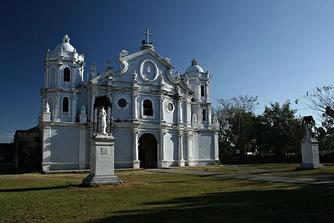
St. Vincent Ferrer Church (San Vicente, Ilocos Sur province) was built in 1795. The church’s facade has two layers of columns divided by ornate architraves. It is considered as one of the loveliest Baroque churches in the Ilocos region.
Miracles are attributed to the parish’s patron saint, St. Vincent Ferrer, attracting pilgrims from all over the Philippines. The convoluted cornices in the church’s top section add beauty to the structure. Octagonal columns topped with mini-domes rise from the base on both sides of the church façade. The ornate wooden pulpit is well preserved. The church is one of the main pilgrimage sites in Ilocos province and the feast day of St. Vincent Ferrer is annually celebrated on April 5.
Miracles are attributed to the parish’s patron saint, St. Vincent Ferrer, attracting pilgrims from all over the Philippines. The convoluted cornices in the church’s top section add beauty to the structure. Octagonal columns topped with mini-domes rise from the base on both sides of the church façade. The ornate wooden pulpit is well preserved. The church is one of the main pilgrimage sites in Ilocos province and the feast day of St. Vincent Ferrer is annually celebrated on April 5.
15. St. Mark the Evangelist Church. Cabugao, Ilocos Sur
St. Mark the Evangelist Church was built from 1695-1696 by Father Andres Canalejo. Many reinforcements were done to the church's structure after a lot of destructions. It has a baroque facade divided into two levels with a semicircular arched main entrance held by paired doric columns and blind segmented windows on the first level.
16. Sinait Church. Sinait, Ilocos Sur
Sinait Church is located in Sinait City, Ilocos Sur Philippines. Sinait Church is popular for tourists, as it holds the much revered 17th century image of the Black Nazarene.
17. St. Augustine Church. Tagudin, Ilocos Sur
The Church of St. Augustine, made of brick and stone and earthquake baroque style started construction in 1796 and finished in 1832. The belfry, detached from the main church typical of earthquake baroque architecture was built in 1881. The church convent is now a school run by the Immaculate Conception of Mary Sisters.
Sources:
Note: I do not own the pictures I used here, I just searched them.
http://bestphilippineattractions.com/2012/01/07/vigan/
http://www.ilocossur.gov.ph
http://thepathwaytoasia.com/paoay-church-ilocos-norte/
http://www.milesnoctis.com/portfolio-items/bantay-bell-tower/
http://bragsimply.blogspot.com/2012/08/the-sinking-bell-tower-of-laoag.html
http://blackhowling78.multiply.com/photos/album/112/-Ilocos-?&show_interstitial=1&u=%2Fphotos%2Falbum#photo=3
http://visita-iglesia.com/churches/st-pauls-cathedral-vigan-ilocos-region.html
http://dwightronan.wordpress.com/2012/02/25/exploring-ilocandia/
http://365greatpinoystuff.wordpress.com/2010/11/21/325-church-of-san-vicente-ferrer/
http://heritageconservation.wordpress.com/2007/09/26/sinait-church/
http://heritageconservation.wordpress.com/category/ilocos-sur/
Note: I do not own the pictures I used here, I just searched them.
http://bestphilippineattractions.com/2012/01/07/vigan/
http://www.ilocossur.gov.ph
http://thepathwaytoasia.com/paoay-church-ilocos-norte/
http://www.milesnoctis.com/portfolio-items/bantay-bell-tower/
http://bragsimply.blogspot.com/2012/08/the-sinking-bell-tower-of-laoag.html
http://blackhowling78.multiply.com/photos/album/112/-Ilocos-?&show_interstitial=1&u=%2Fphotos%2Falbum#photo=3
http://visita-iglesia.com/churches/st-pauls-cathedral-vigan-ilocos-region.html
http://dwightronan.wordpress.com/2012/02/25/exploring-ilocandia/
http://365greatpinoystuff.wordpress.com/2010/11/21/325-church-of-san-vicente-ferrer/
http://heritageconservation.wordpress.com/2007/09/26/sinait-church/
http://heritageconservation.wordpress.com/category/ilocos-sur/

